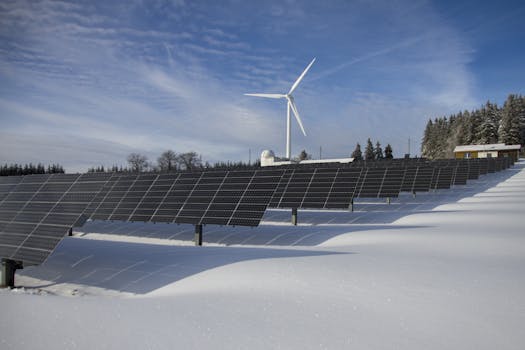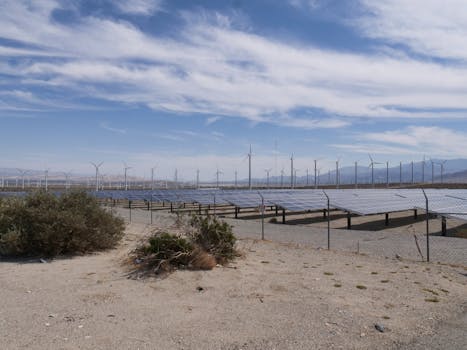
Introduction

The latest breakthroughs in renewable energy technologies are transforming the way we think about power generation and energy consumption. As global temperatures rise and fossil fuel resources dwindle, the shift towards sustainable energy sources is more critical than ever. This article delves into the most recent developments in renewable energy technologies that promise to revolutionize the industry.
Solar Energy Innovations

Solar energy has seen remarkable advancements, particularly in photovoltaic (PV) technology. The introduction of perovskite solar cells, which are cheaper to produce and more efficient than traditional silicon cells, has sparked significant interest. Researchers have been able to achieve efficiencies exceeding 25%, making these cells a viable option for large-scale energy production.
Additionally, bifacial solar panels are gaining traction. These panels can capture sunlight from both sides, increasing energy yield by 10-20%. This innovation allows for more efficient use of land and reduces the cost per watt of solar energy.
Wind Energy Developments

Wind energy is another area witnessing groundbreaking advancements. The development of offshore wind farms has taken center stage, with turbines now reaching heights of over 250 meters and generating up to 12 MW of power each. This increase in size and capacity allows for more energy generation per turbine, significantly lowering the cost of wind energy.
Floating wind turbines are also being tested, allowing for wind farms to be placed in deeper waters, where wind speeds are typically higher. This could vastly increase the potential for wind energy generation globally.
Energy Storage Solutions

One of the most crucial components of renewable energy is energy storage. The latest breakthroughs in battery technology, particularly lithium-sulfur and solid-state batteries, promise to address the limitations of current lithium-ion batteries. These new technologies offer higher energy densities, longer lifespans, and faster charging times, making them ideal for storing renewable energy.
Furthermore, the development of grid-scale storage solutions, such as pumped hydro storage and thermal energy storage, enables better management of energy supply and demand. This flexibility is essential for integrating renewable sources into the grid effectively.
Hydrogen Production Advancements

Hydrogen is emerging as a key player in the renewable energy landscape. Innovations in electrolysis, particularly using renewable energy to produce green hydrogen, are progressing rapidly. This method allows for the production of hydrogen without carbon emissions, providing a clean fuel alternative for various sectors, including transportation and industry.
Moreover, the use of hydrogen as an energy carrier and storage medium is gaining attention, as it can be converted back into electricity when needed, offering a solution to the intermittency of renewable energy sources.
Conclusion

In conclusion, the latest breakthroughs in renewable energy technologies are paving the way for a sustainable future. Innovations in solar and wind energy, energy storage solutions, and hydrogen production are enabling a transition away from fossil fuels. As these technologies continue to evolve, they hold the potential to meet global energy demands while combating climate change.




